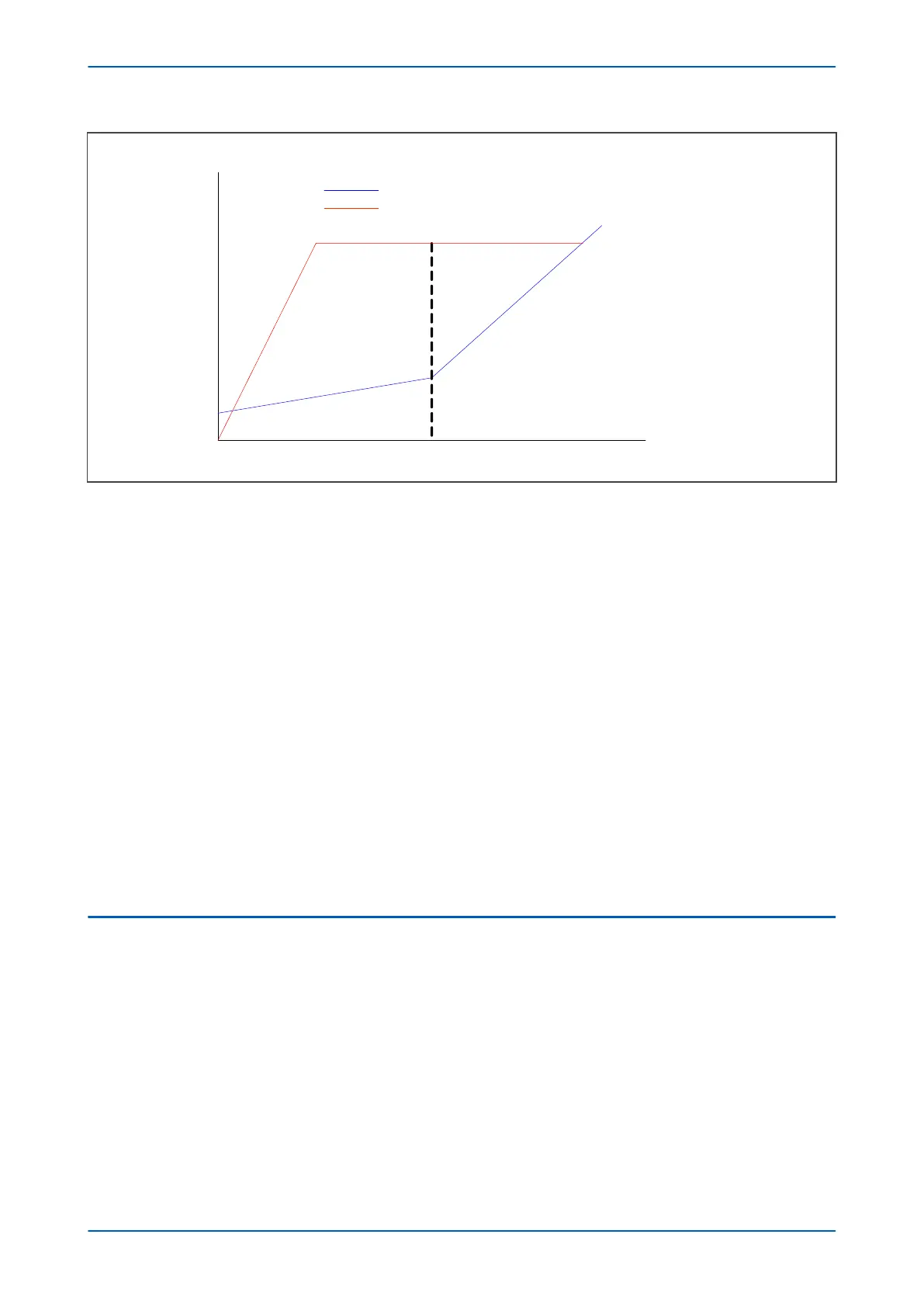V02603
Ibias
Idiff
IS1
IS2
Restrain
Region
Operate
Region
Supervise
Region
K1 Slope
K2 slope
Normal Tripping Characteristic
Supervised Tripping Characteristic
Figure 141: Switched Communication Path supervision
The change to the characteristic is determined by tw
o timers (Char Mod Time, and Char Mod RstTime) found in
the PROT COMMS/IM64 column. These timers start when the switched communication path condition is
recognised. These timers define how long the modification to the tripping characteristics is applied for. A
communications delay alarm (Comm Delay Alarm) is also raised at the same time.
When the Comm Delay Tol setting has been exceeded for two consecutive calculations, the K1 slope is increased
to 200%. When the 200% slope reaches the IS2 setting, the characteristic tracks a horizontal line until it meets
with the K2 slope which the characteristic then follows.
The characteristic normally returns to normal when the Char Mod Time expires, but a mechanism is provided to
accelerate the reset if system conditions permit by using an additional timer Char Mod RstTime which is set to a
value less than the Char Mod Time.
The Char Mod RstTime can be enabled or disabled. If it is enabled, then it starts when the Char Mod Time starts. If
the Char Mod RstTime has expired, but the Char Mod Time is still running, AND IF the bias current is above 5% In,
AND IF the differential current is below 10% of bias current on all phases, then the Char Mod Time is reset and the
characteristic returns to normal. If these conditions are not met, then the characteristic remains increased for the
duration of the Char Mod Time. The Char Mod RstTime should be set greater than the minimum switching delay
expected, and less than the Char Mod Time.
We don’t recommend it, but If you don’t want the tripping characteristic to be changed during communications
switching operations, you should set Char Mod Time to 0.
2.3 COMMUNICATIONS ASYMMETRY SUPERVISION
The settings for this function reside under the DIFF SUPERVISON sub-heading of the SUPERVISION column.
The Communications Asymmetr
y Supervision function is included to supervise the Current Differential protection
on applications where communications path switching is expected. It is particularly intended to identify a situation
where communications switching has occurred and the communications has been re-established onto paths
where the symmetry requirements are not fully respected, but where the arising apparent differential current is
insufficient to cause tripping. It is usually used to indicate that the telecommunications network is not configured
as expected. It can also be used to block operation of the Current Differential protection until the issue has been
resolved. If the communications paths between a pair of devices are running on different paths, the protection will
calculate an apparent differential current even though the currents entering and leaving the protected zone
balance. If this pseudo-differential current exceeds the criteria for tripping, maloperation will occur. If the level is
less, it can be assumed to be caused by asymmetric communications paths and the restraint characteristic can be
Chapter 13 - Supervision P54A/B/C/E
282 P54xMED-TM-EN-1
